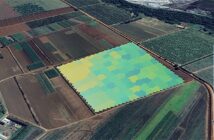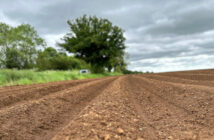Yara has announced a new partnership with Cranfield University as part of the latter’s Knowledge Transfer Partnerships (KTP) programme, a three-way venture between a business, a UK university, and a Post-Doctoral researcher. The purpose of this partnership will be to research and trial organo-mineral fertilisers (OMF), a product that will help growers to add organic matter and create a larger ‘nutrient store’ in their soil for long-term yield resilience.
“The partnership is a funding mechanism that creates a mutually beneficial knowledge exchange between industry and academia,” says Dr Ruben Sakrabani, associate professor in Soil Chemistry. “Fertiliser prices are skyrocketing, alongside other challenges. Yara is championing this OMF project and Cranfield aims to provide vital scientific insights over a 30-month period.”
This KTP partnership will be facilitated by Dr Emma Burak, the associate of the KTP who will act as the bridge between Yara and Cranfield. Her research will combine ongoing trials and lab work.
Environmental impact
“The main investigation will be regarding the efficacy of OMF, as well as their environmental impact,” says Emma. “These are quite broad questions, which we will hone and refine as time goes on. Current trials show no yield deficit when switching to OMF products and trials will run across multiple sites, mainly focusing on the major crops.”
This will, in turn, help Yara to create more sustainable fertiliser products. “Whether it’s green ammonia or OMF, Yara wants to help growers become more sustainable,” says Natalie Wood, Agronomy operations manager at Yara. “That becomes possible when we become more sustainable ourselves and find ways to reduce our carbon footprint.”
At the culmination of the 30-month partnership, Emma will join Yara’s team and hopes that the data will help enable the use OMF in the UK: “Ideally, OMF will be a mechanism to increase soil health without changing anything but the product you use,” adds Emma. “That is ultimately what we’re testing for, and my role is to bridge that gap between academia and the practicalities of modern farming.”




